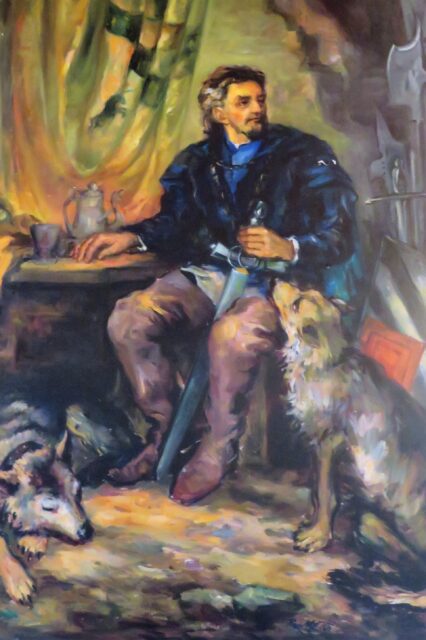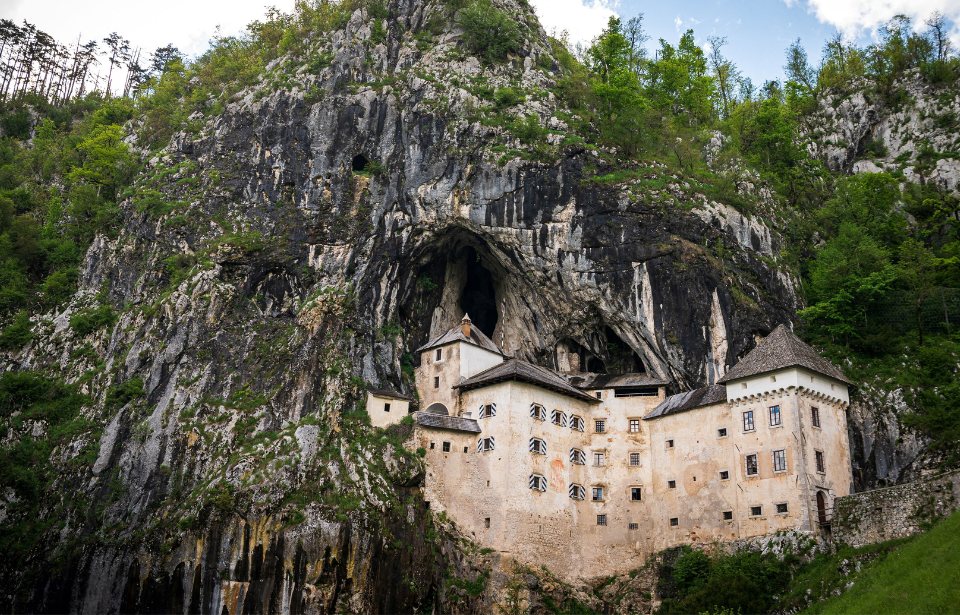Predjama Castle has a rich history. Not only is it distinguished as the largest cave castle, but it is also steeped in medieval lore. It has survived several disasters, natural and manmade, and tourists can see it in its most recent iteration, dating to the 16th century.
Predjama Castle is carved into a cliff

One of the first mentions of Predjama Castle was in 1202, and then again in 1274 when the Patriarch of Aquileia had it built in Gothic style. Located in the historical region of Inner Carniola in southern Slovenia, the castle was built into the mouth of a 400-foot cliff surrounded by an intricate cave system.
The castle sits about halfway up the massive cliff and was built beneath a natural rocky arch that made access to the structure difficult beyond its front door. Thanks to its strategic position inside a cave, Predjama served as a residence, with rooms and halls carved right into the cliff rock face, and excelled as a defensive stronghold. It is no surprise that it holds the Guinness World Record for being the largest cave castle in the world.
The legend of Erasmus

Not only is Predjama an architectural marvel of the medieval period but it is also steeped in legend. At some point in its history, the castle was acquired by the Luegg noble family, as known as the Knights of Adelsberg. In the 15th century, it became known as the seat of the knight Erasmus, a renowned robber baron referred to as a “Robin Hood” figure.
Erasmus fell into some trouble with the Habsburgs after he killed the commander of the imperial army, Marshal Pappenheim, in a duel after the latter offended his deceased friend. He fled from the Holy Roman Emperor Frederick III to Predjama Castle and allied himself with King Matthias Corvinus. The emperor then employed the governor of Trieste to capture or kill Erasmus, sparking the beginning of a long siege.

Remarkably, Predjama Castle was able to withstand the siege, and Erasmus and his men were able to survive inside the grounds as there was a hidden natural vertical shaft that led out to an exit at the top of the cliff. With the governor of Trieste and his army none the wiser, Erasmus stocked his castle with food and supplies, evening going so far as to mock the attacking army by throwing fresh food at them.
However, the siege would eventually come to a close. It is said that Erasmus’s demise was the result of one of his servants betraying him. While using a lavatory on the third-floor terrace that overhangs from the cliff, a cannonball was shot and ultimately killed him. This marked the end of the Slovenian Robin Hood.
The castle’s journey to the present day

Following the fall of Erasmus, Predjama Castle was acquired by the Oberburg family in 1511. The family had a second iteration of the castle built to repair damages from the siege, but sadly, it was destroyed in an earthquake. Then, in 1570, the castle was rebuilt in the Renaissance style that it can be seen today. It exchanged hands a number of times before finally being confiscated by the Yugoslav Communist authorities following WWII. It was then turned into a museum.
More from us: Jal Mahal: The Abandoned Palace Submerged in India’s Man Sagar Lake
Since then, the castle has been open to visitors who can explore the hallways and rooms carved into the cliff, as well as the many medieval elements maintained there, including “murder holes” and torture chambers. The castle has also been used in modern pop culture, including being featured in Jackie Chan’s 1986 film Armour of God. During this time, he performed a stunt jumping from the cliff and onto a balcony that resulted in one of his most serious injuries while on set in his career.
